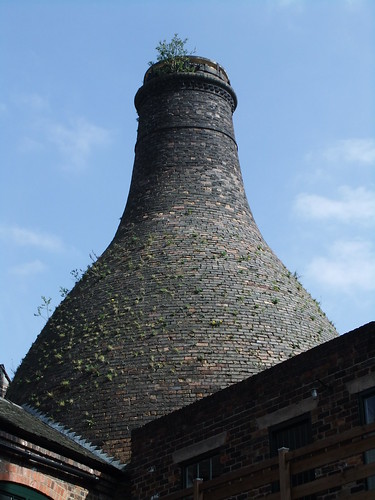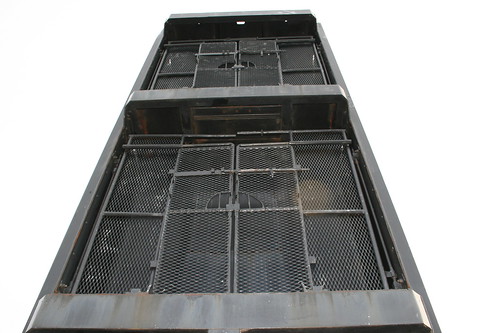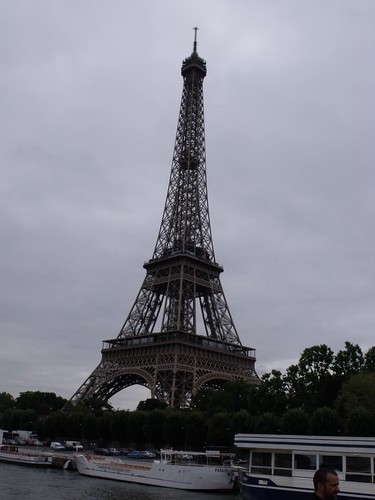
Lifts For The Home
"If you die in an elevator, be sure to push the Up button."
Sam Levenson
 | |
| Image:Flickr-Lee J Haywood |
Lifts in Coal Mining
 |
| Image:Flickr-CloudSurferUk |
 |
| Image:Flickr-Dave Dawson |
Lifts in Films
Lifts, or elevators, have gripping and sometimes amusing scenes in films. The fact that directors stage certain events in lifts is interesting and suggests to me that the lift has a perhaps dark place in our psyche. It is perhaps akin to flying, something we do, but feel that really, we ought not to do. To be enclosed in a metal box, suspended on a cable in a shaft is not a good idea. It is true to say that very few people speak in a lift and the almost eerie silence is only broken when a stop is reached and the doors open to free the tense passengers into a more comfortable environment. Lifts can be claustrophobic and like an aircraft most people are relieved to be out of them. It may be this that makes their use in films so potent. 'How Green is My Valley' by John Ford 1941 was set in South Wales and centres on groups of anxious relatives and friends waiting outside the colliery winding house for the lifts to bring up the survivors and the bodies of husbands and sons from a disaster far below ground.
Some other notable lift scenes.
'Terminator 2: Judgement Day' 1991 Arnold Schwarzenegger
'Silence of The Lambs' 1991 Anthony Hopkins
'Guns of Navarone' 1961 Gregory Peck
'Where Eagles Dare' (Cable Car fight) 1968 Richard Burton
'The Lift' (Dutch) 1983 The chilling film featured a lift which killed people at random; all down to an experimental computer chip which malfunctioned and took on a malignant personality of its own.
'Willy Wonka and The Chocolate Factory' 1971 Gene Wilder
This lift was no ordinary lift! The glass 'Wonkavator' not only went up and down. Willy points out that his lift 'can go sideways, slantways, backways and frontways.' Young Charlie and Grandpa Joe enter the lift and push the big red button. The Wonkavator rises, going faster and faster until it smashes through the factory roof and soars high in the sky above the town. Don't think about it if you travel on the high speed lifts in the Shard - more about those later!
Who invented the lift?
The answer to this question is debateable. One certain fact is that the concept of a lift goes back a very long way. A type of platform lift was certainly known in the ancient world and it is thought that Archimedes (Gk 287BCE-212BCE) may have influenced the idea of lifts. Everybody heard of Archimedes at school, but what a talented guy he was! Most of us are challenged by one major academic discipline. Archimedes was a mathematician, physicist, engineer, inventor and, just for good measure, an astronomer. He designed the Archimedes Screw. This was a screw-shaped shaft enclosed in a tightly fitting cylinder used for lifting water from one level to a higher level, when irrigating farm land. He established what is known as the Archimedes Principle. This is a well known story but it has important practical implications. A king had ordered that a crown be made and had supplied the pure gold for the purpose. It was suspected that the goldsmith had substituted some of the gold for silver and evidence was demanded of such dishonesty. Archimedes was tasked with finding the truth. He pondered long on how to assess the volume of an irregular shape. Now comes the well-known part of the story. Whilst taking a bath he realised that the water was running over, having been displaced by the volume of his own body weight. This was the answer to the volume of the metals in the crown. Such was his excitement that he leapt out of the bath and ran down the roads of Athens naked, shouting out the familiar cry of "Eureka" - "I have found it". No schoolboy humour please! It is the Archimedes Principle that defines the tonnage of a ship - the volume is that of the water displaced.
Elevators in Ancient Rome
The Romans, whilst barbaric, were great inventors. They built long straight roads to allow the army to march across most of the Empire. Public baths and saunas, drainage systems, and central heating also were a part of Roman city life. They also used lifts or elevators. The Colosseum in Rome was the venue for 'sport'. Here gladiators fought to the death, Ben Hur style chariot racing and even elephants thrilled the crowds and just to add to the fun, early Christians were burned at the stake or ripped apart by lions. Romans flocked to the Colosseum like 'Stokies' descend on Britannia Stadium!
 |
| Image:Heatheronhertravels |
A lift fit for a King - Louis XV 'The Well-beloved' (1710-1774)
It is not only today that lifts are used to facilitate discrete clandestine amorous liaisons . Versailles, the seat of the French Monarchy, was equipped with a very special lift system and it was nothing to do with a Romanesque Mr Carson bringing the monarch's food from below stairs in Downton Abbey! In 1743, King Louis XV installed what was called 'The Flying Chair' in the Palace of Versailles. The flying chair was a small cabinet through which a rope hung - the occupant could pull the rope to either lower or raise the chair. The system depended on a number of counterweights and pulleys but it proved effective. Louis XV ordered the chair to be made by one of his favourite machinists Blaise-Henri Arnoult. The King could enter the chair from his balcony. The purpose of the lift, amazingly running outside of the building, was to afford privacy as well as climbing stairs in full view or courtiers when the King wished to visit the apartment of his mistress, the most famous being Madame de Pompadour. I assume that the weather would not deter the King's passion! Louis had married Marie Leszczynska, daughter of the deposed King of Poland. After her death, Louis showed little interest in the affairs of State. As in the case of Queen Victoria on the death of her beloved Albert, the people began to lose faith in the monarch and his neglect of his Royal duties played a significant part in the Revolution of 1789.
Otis v Tufts
There is debate between who really developed the modern lift - Elisha Graves Otis or Otis Tufts? There was concern in the minds of many people over lift safety. In 1852, the American company of Otis and Son invented a safety device. It was a crude but effective idea. In the event of a cable break, a wooden frame, located at the top of the lift, snapped into place against the shaft wall and acted as a brake, avoiding a disastrous plunge to the bottom. The idea was treated with some scepticism. Otis took a dramatic solution to prove that the device worked. In 1824 at the New York World's Fair he rode on a platform hauled high in the air and instructed that the rope be cut. The platform moved just a few feet and the 'brake' mechanism worked and he returned to the ground unscathed. Otis went on to found Otis Brothers lift manufacturers. In 1874 they installed the first commercial lift in a department store in New York. By later designs, this was nothing too dramatic but the buildings five floors was just the start of later 'sky-scraper' construction in the USA. Electric lifts or elevators first appeared in the 1880s. It has to be noted that the company was not an immediate success and people still had reservations about lift safety. In 1859, Otis Tufts patented a new concept in lifts design. It was to revolutionise the industry. It used the first box style enclosed elevator car equipped with bench seats - no standing up then, even before the today's obsession with Health and Safety. Most importantly, his design incorporated a new safety feature, which, he hoped would reassure the public. He abandoned the rope and pulley in favour of a 'nut and thread' rail running the whole length of the lift shaft. The car was the 'nut' which ran along the giant metal screw. This was certainly going to be safer, but, it was not a practical solution. It proved to be highly expensive and therefore not suited to high buildings which were becoming the norm. The demand for elevators was here to stay and Otis Brothers finally became the leader in elevator building. Otis Brothers now called 'The Otis Elevator Company' are the largest company in the world building elevators, lifts and moving walkways. They operate in the Americas, Europe and Asia. Otis installations currently stand at 2.5million and the service contracts around the world are currently 1.8 million. It is not surprising that the company employ some 61,000 people with 53,000 outside of the USA. As for the game Otis v Tufts it is clear who won!
Some iconic structures - a challenge for the lift engineers
 |
| Image:Flickr-Elliot Brown |
The Tower during the German occupation
With the occupation of France by Hitler's troops, the Eiffel Tower came into his sights as a prestigious, symbolic image of victory. The French were not going to give in easily. The lift cables were cut; if Hitler wanted to get to the top he would have to climb. Soldiers were to ascend the tower and fly a swastika from the top, ready for Hitler's arrival. It was too big and high gusts of wind blew it away. They had to climb again and put up a smaller flag. When Hitler made his grand entry into Paris and arrived at the Tower, he kept his feet firmly on the ground. Even the Fuhrer couldn't face the 1665 steps to the top! By 1944, the Allies were approaching Paris. In a fit of defiance, Hitler ordered General Dietrich von Choltitz, the Military Commander in Paris, to destroy the city and blow up the Eiffel Tower. Thankfully, the General disobeyed the order. Hitler had conquered France but he did not conquer the Eiffel Tower!
The early 19th century saw huge social and economic change. The Industrial Revolution brought mills and mines into the towns of the north and 'pot banks' into Stoke-on-Trent. The drudgery was relieved by the annual holiday or 'Wakes'. This meant a holiday, or more likely a day, by the sea, more often than not in the new resorts like Blackpool. I remember as a child my father making me and my two sisters stand in line on the promenade, after a donkey ride of course, facing into the bracing air for which Blackpool was renowned and being told "Take a deep breath, you are going home soon." "Tunstall, Burslem, Hanley, Stoke, Fenton, Longton through the smoke." (From 'Burslem Wakes' by Brian Berrington) A Mayor of Blackpool had seen the Eiffel Tower and was determined to see a similar structure in his town. This perhaps rather pretentious, not to say ambitious desire to make Blackpool emulate Paris, came to unlikely fruition in 1891 with the erection of Blackpool Tower. Local businessmen set about raising what was then a huge amount of money and over a building period of three years and at a cost of £300,000, Blackpool had its tower, if not the Palace of Versailles, on a site perhaps not as splendid as the Camps de Mars. The area at the base of the tower gave the north the famous Tower Ballroom with its Wurlitzer organ. The radio ran a regular programme featuring the organ played by Reginald Dixon. The Tower was an immediate attraction. After the opening, 3,000 customers took the trip to the top. Tourists paid six pence entry charge and a further six pence to ride the lift. In 1956, the hydraulic lifts were removed and the winding gear replaced with an electric system. This system was again modernised in 1992. Following a major refurbishment in 1998, 'The Walk of Faith' was installed. This is a two inch thick glass floor at the top of the tower. Being one who hates heights and feels airsick on a deep pile carpet this is certainly not for me! Take a trip and see for yourself.
The Shard - London
It seems that the desire to build higher and higher structures is with us for good. Architects and civil engineers have perfected techniques and materials to an unbelievable level, the like of which engineers like Gustave Eiffel could never have imagined possible. The 87 storey tower, built between 2009-2012 is currently the highest structure in the European Union and the second highest in the UK. The highest is the Emley Moor transmitting station. This concrete tower, near to Holm Moss, may be taller, but it is a very different proposition to an occupied building of such proportions. The Shard is 306m (1,004 feet) high. Of the 87 stories, 72 are habitable and include a hotel, office suites, exclusive apartments and a privately owned observation platform which opened to the public on 1st February 2013. The ride to the top will set you back £25. The tower is accessed by 36 elevators, 10 escalators and 13 double-decked escalators. The ultra high speed, Kone elevators travel at a mind blowing rate. Watch the floor numbers as you ascend to get a feel of just how fast the lifts are.
Safety of high buildings
Tall buildings are vulnerable. In areas affected by earthquakes, tornados and tsunamis, the ensuing destruction is all too common. Technical problems can also cause disruption.
From The INDEPENDENT High anxiety: More than 200 visitors stranded 800ft up The Shard after lift stops working The unlucky visitors were left stuck on the 68th floor for more than an hour after a fire alarm was "accidentally activated” A spokeswoman for The View From The Shard told the Evening Standard: “A fire alarm was accidentally activated, resulting in the lifts being temporarily grounded. The safety of all our visitors is our greatest priority, so the activation was investigated immediately and the lifts were operational again within an hour, however this did cause some delays. Guests who were unable to wait were offered the chance to return again on another date free of charge. We apologise for any inconvenience.” Not all disasters are natural. The horror of the 9/11 attack on the Wold Trade Centre may bring into question the building of structures such as The Shard. Lessons have been learned from the attack with regard to safety in construction. The structure can maintain stability under extreme conditions and has a sway tolerance of 400 millimetres or 16 inches.
Lifts on a smaller scale - in the home
I have taken a look at mines, high towers and skyscrapers and the huge complicated lift systems that developed to serve the need to transport people and goods from one level to another. As always, technology leads to new developments and applications of basic systems to other situations. The domestic lift made available in one's own home is just one further exciting development. There is no requirement for major structural alterations and cables and pulleys. Home lifts are self-supporting, quiet, and, importantly in your home, stylish. Whether it is transporting you from the sitting room to bed at night, or carrying appliances such as the vacuum cleaner or baskets of washing to the airing cupboard, a home lift will make life very much easier and safer. When mobility issues or heart and breathing problems come along, a home lift is a possible solution.
Some questions and answers about lifts
I have a fear of being trapped in a lift, can that happen? No. In the event of a power failure, the battery takes over and transports the lift back to the ground floor. Most manufacturers guarantee a thirty minute fire integrity.
Is the lift enclosed in a shaft or tube? No. The lift is not enclosed in any type of shaft and are self-supporting.
Could I fall off? No. The lift has clear doors and it cannot operate unless the door is closed and will not open when the lift is in motion.
How is the lift controlled? The lift is called and operated by a wall mounted wireless link.
How many people can use the lift at any one time? The lift will usually carry two people up to a safe working weight of 250kgs
Is installation a major disruption? No. Once the best location and feasibility study has been carried out, installation will usually take just two working days and the lift is ready for use.
I use a wheel chair. Would that present a problem? No. Most residential lifts can accommodate a wheel chair. Examples of such are found here.
Are they expensive? They are not cheap, but check with your local supplier for attractive deals.
At the end of the day, lifts great and small, bear testimony to the old adage: 'What goes up must come down. ' You can thank Isaac Newton for that!
